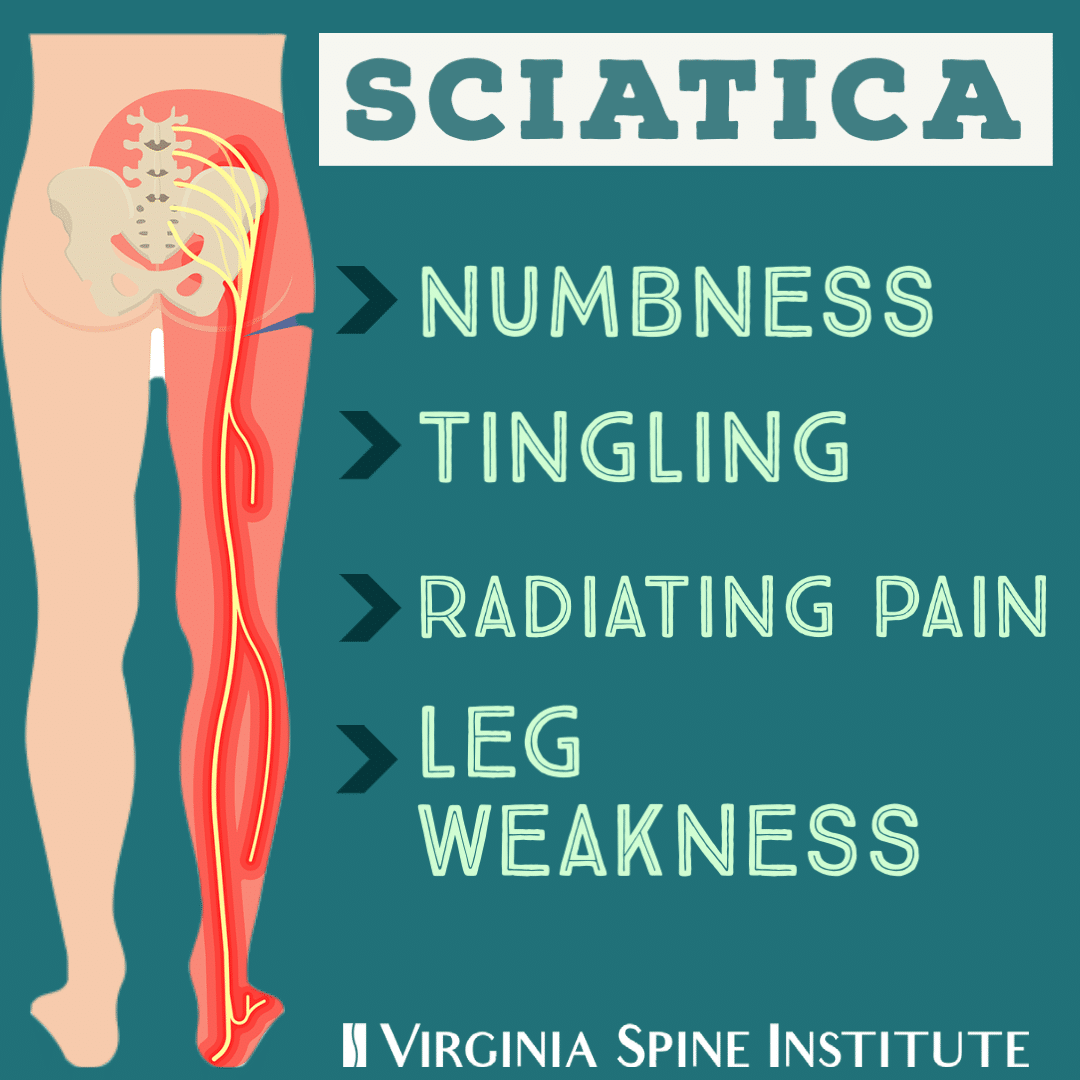
How Physical Therapy Can Jumpstart Your Sciatica Treatment
As an interdisciplinary spine-specialized practice, we are fortunate to be able to offer our patients in-house nonsurgical care to often begin their treatment. One of the most effective nonsurgical methods is spine-specialized physical therapy. As the only spine-specialized physical therapy practice in the metro-Dc area, we not only serve our own patients but also care for patients coming from other orthopedic doctors as well.
With approximately 40% of the population deals with symptoms of sciatica every day; that’s over 130 million people in the United States alone, and we are almost always treating many patients suffering with this debilitating condition. Recent research has shown the best first treatment to treat Sciatica is–you guessed it — Physical Therapy. The earlier you start physical therapy, the better results, and the faster you can get back to your life. Typically, your surgeon will recommend physical therapy as part of treatment, but be sure to seek a diagnosis from your surgeon before heading straight to PT.
Sciatica, also known as lumbar radiculopathy, has symptoms of pain, tingling, numbness, or weakness traveling down the sciatic nerve from the lower back into the buttocks/hip, and radiates down the back of the leg. In a recent study by author Julie Fritz in the Annals of Internal Medicine, she looked at 220 patients, ages 18 to 60, who suffered sciatica pain for an average of one month and less than three months. Half were assigned physical therapy and the other half to a wait-and-see approach with a general education pamphlet and a suggestion on staying active. The early physical therapy group performed four weeks of physical therapy, including therapeutic exercise, manual therapy, and an individualized home exercise program.
Physical therapy heals.
When surveyed with a standard questionnaire on difficulties with daily activities such as walking, sitting, and lifting objects, both groups showed improvement. However, the physical therapy group showed a significantly greater improvement than the non-physical therapy group. One year later, 45% of the early PT group stated they felt ‘a great deal better’ whereas the comparison group was just under 28%. Physical therapy heals.
Dr. Salvador Portugal, a physical medicine and rehabilitation specialist at NYU Langone Orthopedic Center in New York City, said it best when he said, “Low back pain is complicated. Even when the source can be traced to Sciatica, there can be different “pain generators” for different people.” Sciatica is often caused by:
- Herniated disc(s) often involving L4, L5, and/or S1
- Lumbar Degenerative Disc Disease
- Spinal Stenosis
- Spondylolisthesis
There is no one-size-fits-all therapy for sciatica.
Julie Fritz’s article demonstrates that early physical therapy is a key factor in many individuals getting faster results and better functional improvement. The study suggests a potential benefit of early PT is that it requires less effort to gain a benefit. With current research, we also know movement is better than rest. There is no one-size-fits-all therapy for sciatica. We also know targeted therapeutic exercise and specialized manual therapy in combination together will provide a more optimal outcome for most patients.
Physical Therapy and Exercises Techniques for Treating Sciatica:
- Extension (McKenzie) / Flexion Back Exercises
- Deep Core Strengthening Exercises
- Joint Mobilization / Joint Manipulation
- Dry Needling
- Nerve Glides / Neural Mobilization
- Myofascial Release / Soft Tissue Mobilization
- Aquatic Therapy
- Functional Retraining
Sciatica and low back pain can be challenging to treat, which is why it’s beneficial to carefully select a spine-specialized physical therapist. The physical therapists at VSI Physical Therapy have the skill set to perform a comprehensive evaluation and determine the patient’s Sciatica pain generator. Additionally, the VSI PTs have the treatment skills to provide targeted therapeutic exercises and specific manual therapy techniques to specifically treat each patient’s unique issues. The ability to treat patients specifically to their needs will provide a superior and optimal functional outcome to improve the lives of their patients. If you are believe you are one of the millions of Americans suffering from sciatica pain, schedule an initial consultation and get your customized plan of care started!
Topics covered
About the Author
Featured Resources
Insights to Achieve a Pain-Free Life



